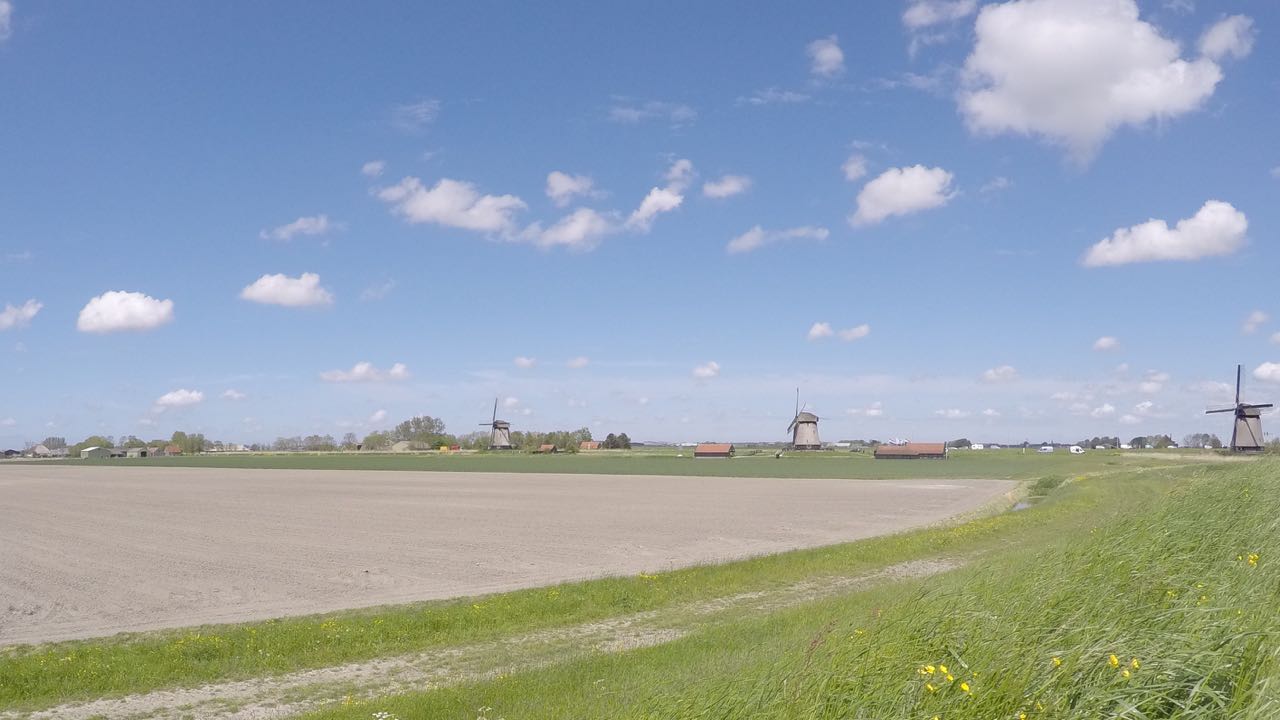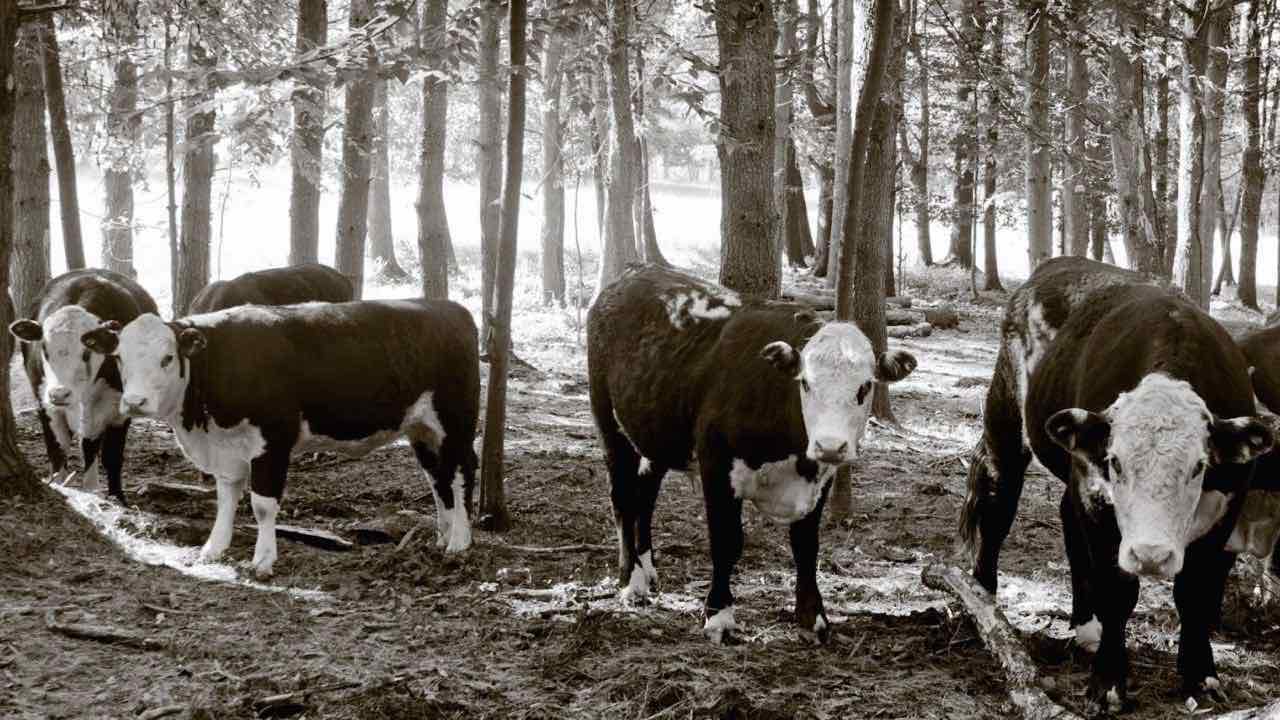Netherlands Fellowship 2015 Program overview
Millenniums of forced land management efficiency has curated a Dutch powerhouse agricultural economy thriving at global scale. What they lack in natural resources and footprint in the Netherlands, they make up for with ingenuity and trade. Recently flexing their mighty muscles to resolve negative outcomes associated to particularly susceptible agricultural practice that had put their citizens in harms way, the Dutch continue to find innovation in what others regard as peril.
:atWhatCost is cheap food paid?
With premise of thwarting mounting risk and improving the health of their people, over the past 15 years the Dutch have re-built a food system of safer meats, cleaner crops, and healthy food product from grass-fed bovine. Through systematically servicing evolving consumer demand with quantifiable results, the Dutch used their best sustainable practice defined as Circular Agriculture not only to source food for their own, but as economic stimulus in attracting greater global market demand. During this transition, the unintended consequences of their production models proved not negative, but positive. Farming operations became more cost-effective while bearing less of a footprint on environment & soil. The Dutch approach to Circular, and not linear, has now proven to be a strong long-horizon investment for public and private stakeholders alike. For us, evaluating how others who’ve already lived through similar concerns that now fester below the surface of food and production systems in the United States may provide further perspective to our inevitable future, and better, define a resolution through evidence-based practice. As I heard from a few of my new Dutch friends – to understand and take beneficial part of the system you’re in, to embrace natural order good and bad, that’s just commonsense.
My primary objective when heading to the Netherlands as part of an EISENHOWER FELLOWSHIP was to evaluate alternative methods that produce cleaner and safer animal proteins (meat). Our current methods of raising food animals in the United States has established an epic public health risk thanks to resulting antibiotic resistance (fka Superbugs) traced from on-farm drug application to hospital care. During my program, I witnessed the solution to this problem comes not from another drug nor discovery of a superpower antibiotic strain. Instead, as the Dutch have proven in the last decade with addressing this same looming public health concern of a world of medicine without bacterial defense – the true solution requires a fix to the system at its weakest points. The resulting outputs from implementation of a Circular Agricultural production model also mediates many modern plagues directly associated to the poor food quality we eat. Reducing chance of obesity, heart disease, neurological disorders & cancers – higher quality food of value has become a first line of defense in human healthcare. The same sustainable practices of Circular Agriculture also cleans-up the environment, salvages vitality of waters, and saves all important topsoils – affording ubiquitous planetary benefit to regenerative systems. What’s so intriguing by these discoveries, and that of the innovation and proven economic growth, the ecological system nuance that’s taken 3 Billion years refining how flora & fauna thrive through efficient nutrient cycling are today being re-discovered as the lifeline to human and planetary health by reconnecting to being part of the system.
 Food as primary healthcare:
Food as primary healthcare:
A collection of essays presenting agriculture’s role in funding human and environmental healthcare, atWhatCost evaluates a Dutch approach as successful precedent in alternative to conventional agricultural practice. More candid – this concept is potential RISK MITIGATION to our US domestic portfolio in dire need of food production diversification. Markets in and around the US, and now farther reaching-globally, will lay witness to the impact of diminishing ecological capacity & environmental instability on polluted or sterilized lands. With this as reality, it’s nearly impossible to call the current agricultural model in the United States a sound long-term economic play. Effectively, how we sustain ourselves on a shrinking planet needs a few perspectives, especially if we can gain insight from those with experience in dealing with past tipping points bound for our horizon. Experts in water and land management, and now repeatable systems for clean & safe food outputs – the Dutch have proven that raising market entrance thresholds to resolve known food and agricultural concerns via properly orchestrated incentive & support instigates free market innovation and growth in form of preventative human and planetary healthcare.
What has become abundantly clear in each of these discussions with insightful and versed connections throughout the world of Circular Agriculture – most countries don’t have the embarrassment of natural riches we’ve enjoyed Stateside. Our practices of haphazardly mining topsoil, and contaminating & overusing water without conscience clearly reflects an entitled and wasteful linear practice brought mainstream over the past 65 years through not having to worrying about impact. Truth is, by not accounting for true costs of food production currently being externalized in the United States – we’re bending the resilience of ecological and planetary boundaries keeping the whole system afloat.
with knowledge of breaking points, we've persisted in testing tolerance of ecological system resilience
Under the tutelage of global thought leaders in alternative agriculture, in the six (6) part essay series atWhatCost – I evaluate the the true costs of cheap food through a domestic and international lens. Through this vehicle I hope to layout the implications, promote pragmatic solutions and amplify the broad-reaching imprint current food production is having on resources of increased demand. Through risk of exposure, loss of nutrients, and menacing results from too much extended blind-faith credulity – we should have no scruples into evaluating and testing alternatives to current linear conventional agricultural practice employed nearly singularly throughout the United States. We’re learning that despite our bounty of riches – we’re no longer an island, and practice of sacrificing food values for product price alone is increasingly detrimental. Of equal if not greater concern, these same unsustainable production systems used domestically are now expansive abroad. As volumes of new global consumers interested in a more resource intensive western diet prove that linear is not scalable, diminishing returns and additional costs are compounded quicker with less than ideal circumstances than we’ve enjoyed in the US. I’m in no way the first to proclaim we’ve got a market & production capacity ceiling soon approaching for US Domestic practice, but none-the-less not many pragmatic solutions have yet been offered.
Putting all our eggs in single conventional basket which relies on practice & premise detrimental to the vigor of regenerative natural resources can’t maintain a pace of exponential taxation coming from human demand.
When results of detrimental agricultural practice are incurred on soils more populated than our own, we’ve witnessed what happens – we’ve seen outcomes, and despite it being counterintuitive or potentially nonsensical, we press-on with a single practice. With known human health concerns directly correlated to how well or poorly we treat our food animals; to liabilities of toxins we spray the very skin of the produce we eat; to a lack of national and nutritional food security currently in the mix without agricultural diversification – we persist with little advancement in alternative food production. We’re destined an inflection point, a future line of demarcation where sustainable agriculture will not only be associated to alternative food production methods brought mainstream through fighting drought, floods, topsoil loss, environmental contamination, or increased market pressures from more engaged consumers, but directly affixed to alleviating production practice putting us at risk of a public health concern of contaminated care, and resolving corrupted food making Americans increasing fatter & chronically more ill.
healthy & safe food is foremost primary healthcare
Best servicing natural order with circular agriculture practice has net positive results. With the proper knowledge and acumen, the benefit of reinvigorating the land lessens synthetic input requirements. These cycling practices won’t deplete resource through mining the soil and water, and won’t require additional proprietary imports nor capacity for dependency on raw materials from far reaching parts of the world that could catch us in similar Middle-Eastern energy conundrum (i.e. Morocco monopoly of Phosphate). You see, eventually the mine runs dry; it’s the guarantee of non-renewable resources. If we keep depleting these regenerative ecological systems as we’ve done with linear conventional practice, the compounding effect of exhausting natural resources force a ceiling to conventional practice to loom ever increasingly concerning with time & scale. Alternatively, when employed as proactive innovation, we like the Dutch gain an arsenal of long-horizon opportunities to nourish a global population with primary healthcare to body & planet through a pragmatic plan of circular practice.
At 2 million cases each year, Superbugs now cost the US health system $20b & 23k lives annually
Forced to read the writing on the wall long before the US, many of our closest allies and European trade partners can systematically help us formulate a plan to bridge our island. During my fellowship program to the Netherlands in May 2015, I gained unique access to an evidence-based agricultural system of empirical and scientific proof that employing circular agriculture at scale is the inevitable future of all growing population densities. Programs that utilize unbiased science on lands that have required sustainable perspective for generations seem a prime sample-set to expedite implementation of alternative practices here in the US. I present in this essay collection awareness of how investments in an innovation economy can spawn new discoveries in producing safer and healthier food. A mitigation to risk that takes a proactive approach in finding alternatives in our food production practice through utilizing proven models for diversification.
Alas, a defining moment will soon arise. Do we in the United States of America once again become a leading voice in innovations that are not just technologies servicing antiquated practice; do we protect our ass against the public health and national security concerns associated to a world without biological medicine; do we stop stressing natural planetary boundaries destined to bite back; do we hedge our bets on global demand and evolving consumer demographics – or do we lose focus of adaptive strategies directly correlated to the reality of changing markets and planet?
Tendering recommendation and strategies for gaining public & private partnership, in essays atWhatCost I explore how doing well by doing great good is the inevitable future of food production increasingly circular.
.
Backstory unparalleled access
Through interconnected efforts, all at different stages of adoption & appreciation, we share an inevitable future of food system evolution
Detailing the farm-gate to global trade experiences of my Eisenhower fellowship program throughout the Netherlands and Brussels, the essay series atWhatCost draws upon new insight and acumen gained by meeting 60 European thought-leaders interconnected in the production and distribution of clean & healthy food from proper sustainable agricultural practice. 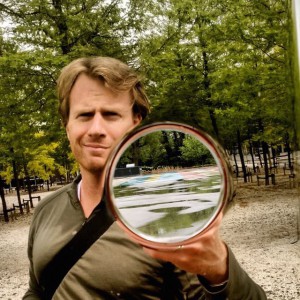 Each essay chapter blends prior knowledge and passion built over a decade in the higher quality/regional US food movements with the eye-opening Dutch approach I learned from experts in the field. Framing the essay series are these core concepts: (i) Evidence-Based Agriculture, (ii) Food Value, (iii) Externalized costs, (iv) Risk Mitigation. Throughout, I utilize chapters pertinent to program meetings in effort to explain each concept sequentially instead of chronologically. The sum of all the parts provides an accurate overview of my program experience, and further a detailed description of the opportunity set forth in the United States. Further personal information about me can be found at: www.AaronNiederhelman.com
Each essay chapter blends prior knowledge and passion built over a decade in the higher quality/regional US food movements with the eye-opening Dutch approach I learned from experts in the field. Framing the essay series are these core concepts: (i) Evidence-Based Agriculture, (ii) Food Value, (iii) Externalized costs, (iv) Risk Mitigation. Throughout, I utilize chapters pertinent to program meetings in effort to explain each concept sequentially instead of chronologically. The sum of all the parts provides an accurate overview of my program experience, and further a detailed description of the opportunity set forth in the United States. Further personal information about me can be found at: www.AaronNiederhelman.com
– Aaron B. Niederhelman, Eisenhower Fellow ’15
Drivers of change an arsenal for food quality
Continuously fighting to keep the wool pulled over your citizen’s and/or consumer’s eyes will never appropriate a healthy people, nor a sound fiduciary plan for the future of shared health care. Tightly commingled, empowering societal awareness to make better decisions in controlling their own well-being & financial state is extremely opportune for paying for the future of the affordable care act through better agricultural practices. By both raising minimum thresholds of market entrance that greatly reduces exposure and risk, and too investing in innovations that systemically result in clean and healthy accessible nutrient value for more – we return food from an afterthought of human existence to a cornerstone of longevity.
.
Drivers to safer & healthier food production Stateside
- Healthier citizens is foremost healthcare – PREVENTATIVE.
- Investing in healthier systems rectifies potential public health epidemics associates to biological medicine resistance “superbugs”.
- Circular agriculture is inherently sustainable & environmentally friendly.
- An innovation economy affords pragmatic business opportunities to grow a niche of market significance domestic & abroad.
- Sustainable practice is more cost effective. As input costs decrease, the vector to conventional returns for best circular practices exponentially increase over time.
- Cleaner water, cleaner air, cleaner environment. Ecological process is of that reduces system inefficiencies to lower costs by diminishing waste streams through refinement. Do more with lower expense and costs.
- Politically friendly. Yes! Both for preservation of capital and resources, ‘conservation’ should be leading the charge toward risk mitigation in domestic production. A conservative approach to preservation of wealth and natural resources is how to bridge any aisle.
- The future farming workforce isn’t aligning with conventional practice. The average age of US farmers has skyrocketed past 60 years old; succession becomes a significant concern. What of propagating a future food system, workforce, and market increasingly focused on health & best sustainable practice.
- Educated & accountable consumers come via generational reform. Chats of food, health & well-being thus enter each home with advocacy.
- A sustainable future of circular agriculture is the only future we’ve got. With populations to reach 9B by 2050, the unequivocal future for food production on a shrinking planet is to return ourselves to being part of natural order through better understanding and implantation of regenerative design.
.
A proven path to safer & healthier food through profitable business
Engaging prior art, aka precedent, from other experts is natural progression in nearly every industry in the 21st century . Proving that Sustainable Agriculture at scale is more than just possible, it’s reality, the Dutch have instituted a cleaner food system out of necessity; and taken that ball, and run with it. As the single largest outside investor in the Netherlands, and they the 4th largest in the States – our trade partnership 400 years in the making seems primed to further express itself through sharing farming acumen on US domestic soils. With the aforementioned and imposing list of drivers weighing heavier each year – we need to take action in the US to reduce exposure, and we’ve got some good friends to help.
The following meetings detail a Dutch model of circular agricultural excellence; essay 2 Evidence-Based Agriculture is next in the series:
.
essay 2: EVIDENCE-BASED AGRICULTURE
Chapter 1: ONEHEALTH
DR. BASTIAAN MEERBURG; Head of Department Livestock and Environment at Wageningen UR
DR. JAAP WAGENAAR; Professor of clinical infections Utrecht U. & OneHealth team
Chapter 2: GOLDEN TRIANGLE
HENRI KOOL; Dir. of Animal Supply Chain & Animal Welfare at Dutch Ministry of Economic Affairs
ELZO KANNEKENS; Deputy Chief Veterinary Officer – (CVO) – at Dutch Ministry of Economic Affairs
GERTINE VAN INGEN; Program Manager livestock antibiotics policy at Dutch Ministry of Economic Affairs
Chapter 3: DUTCH DAIRY
TJEERD DE GROOT; Managing Director – Dutch Dairy Association – representing Dutch domestic and global markets – NZO (Nederlandse Zuivel Organisatie)
ERIC HULST; Cono Cheesemakers CEO – maker of Beemster Gouda – a world renowned cheese recognized for sourcing the best milk on earth through it’s 115 year old grazing dairy cooperative, CONO.
Chapter 4: PRECISION AGRICULTURE
ANTOON VAN DE VEN; Strategic Advisor Greenport and International Affairs
SJAAK VAN DER TAK; Mayor of Westlands, Netherlands
MICHEL GROOTSCHOLTEN; Founder & Owner Michel Grootscholten Nursery
Chapter 6: DUTCH MASTERS
SASKIA STUIVELING; President High Court of State – Dutch Court of Audits 1999-2015
DR. DOP SCHEEWE; Pediatrician with focus on ADHD & Autism
food is Healthcare principally preventative
Contrary to conventional practice, concerns with food production quality matters more to dietary health than that of caloric or fat content
Awakening to a reality that we need systemic change is not what most in private nor public sectors want to digest; but it’s reality. What seems lost is the knowledge, or better, accountability to the fact that Cheap Food is impetus for much of this forced evolution. Low price, but of compromised value to the consumer’s wellbeing, the food chain it services, and the land from where it was produced – commoditized food is just that; cheap. The proven fix comes from an ongoing process of evaluating the system health and wellbeing of each link in the food production chain to include in the calculation of a “true cost” of food these externalities currently swept under the rug. Getting ahead of the curve through fiscal programs focused on ingenuity, system refinement and new technologies is cornerstone to innovation and premise for sustained economic growth that can promote the future of food into becoming the foundation of human and planetary health. The deteriorating wellbeing of the consumer, the land and the environment directly associated to the production of cheap food has situated the United States and all consumers of the western diet into a position of forced innovation by the droves; it’s time we be absolved of our past eating sins and begin to invest in our future.
To this, in the last half century we’ve seen incredible advancements in human care. What’s odd, or potentially premise for these forced advancements in responsive care, the process we use to craft our nutrient security has not progressed. In fact, the opposite has proven empirically true. The cheaper we make the volumes of food servicing the western diet, the more modern plagues and food safety risks we incur. At a top level, the process of pumping out inexpensive calories that do not account for food’s true cost is ever stressing a reactive healthcare system by not bolstering a preventative-care system no matter perceived proficiency nor advancement in modern care.
the healthier we can become as a society through preventative methods of what we eat - the less taxing we are to each & every system
Paying for the future of healthcare needs a paradoxical change in what ails us. That change comes in the form of preventative methods alternative to conventional agricultural practice that has since the inception been asked to continuously cheapen food, an intrinsic flaw that has proven out with a backlash of lost nutriment, depleted biodiversity and homogenized animal & seed stocks. Representing a nonsensical and unproven approach in shepherding the regenerative natural resources we’ve employed for all but the last .01% of man’s agricultural linage – we need new discovery at the hands of alternative perspective to address unhealthy systems built on compromised cheap food.
The Dutch have already learned hard lessons of system resilience, and now use that knowledge to fuel an innovation economy focused on a regenerative process of alternative agriculture. This does many great things, but most noticeable it becomes a foundation for preventative human healthcare. The Dutch have developed this through an offshoot of modern agricultural which utilizes proficiency and production efficiency without sacrificing the value of food.
Getting us to a point of wellbeing, and thus paying for the future of the affordable care act in the United States would be expedited with properly positioned subsidies and incentives into domestic innovation and entrepreneurship that correlate directly to finding biomimicry efficiencies in natural order of nutrient cycling. Fundamentally, it’s innovation economies that service a large free-market segment that will sway consumer desires for safer and healthier foods. For private & public sector – curating business growth through investment in Food Value is recouped through dividends of system resilience, reduction in agricultural environmental footprint, and food’s influence on culture, family & ideology; but most noticeably, it’s proven with better societal health.
Meeting with the following contacts to detail the importance of a healthy diet, Food Value is the third essay in the collection:
essay 3: FOOD VALUE
Chapter 1: DECOMMODITIZATION
VOLKERT ENGELSMAN; CEO of Eosta and the founder of Nature & More
HENK & ANNIE KREGEL; Owner Operator of CowHotel – part of Cono Dairy network
Chapter 2: MINIMUM THRESHOLDS
FRANS VAN DONGEN; Director of International Affairs: COV – Dutch Meat association
JOOST KORTE; Deputy Dir. -General for Agriculture & rural development, DG AGRI European Commission
Chapter 3: CULTURAL VALUES
DR. HUUB LOFFLER; Director, Wageningen International
MICHAEL VOORDECKERS; Strategy Dir. at Hill + Knowlton – Eisenhower Fellow
Chapter 4: SOCIETAL VALUE
JACQUELINE CRAMER; Minster of Housing, Spatial Planning and the Environment (US equal to HUD)
DR. HENK OOSTERLING; Professor of Philosophy & Rotterdam #ChangeAgent
Chapter 5: PERSONAL WELL-BEING
FRITS THISSEN; Agricultural Counselor, Permanent Mission of the Netherlands in Brussels
.
True cost of food calculating externalized costs
Impossible is it now for anyone to consider a world of boundless growth. Earth will remain a finite resource of no unclaimed terra, nor further exploration. Equally important to this realization is that there’s no far reaching “never-never” land to continue to exploit nor buffer the impact of our exploding waste stream. Since empowered to enact freewill on our surrounding, and gained hubris in believing we have control of the system that contains us – we’ve been terrible shepherds. Not listening to natural order (preordained rules establishment in resilient ecological systems) -conventional inputs deplete resources without replenishment. It’s becoming evidently clear to those who have been forced to pay attention, we must do better in living within the rules set forth in our regenerative systems. Instead, we’ll fall victim to a required recognition that depleting finite resources of “planetary boundaries” will be catastrophic in recovery.
by being part of the circularity of natural order, the Dutch have innovated 70% of their GDP from lands below sea level
The current conventional agricultural practice employed domestically I’ve heard best described as less farming and instead resource mining. From practice of excessive use of expensive and corrosive inputs – we’ve depleted capacity and proximity of soil fertility that cleans and holds water. Our abundance of natural resources has long since afforded domestic US food production opportunity to take without clear perspective on long-term viability, nor knowledge of increased reliance on inputs.
Environmental and resource concerns are real in farming, even for us the United States. Most in the know will tell you that water will be the #changeagent in agriculture. In the US, a lack of rain in conjunction groundwater exhaustion, and now deep water aquifer tapping should have us concerned with a potential loss of stable food security from California. Western high plains, and next our breadbasket so reliant on the practice that unsustainably sips for the great Ogallala will cause production evolution and hopefully not hysteria. Haunting is this potential sequel to the Dust Bowl in numerous areas of the US as much of our worst depleting practices are happening in historically proven susceptible areas.
A true cost of food includes nutritional and production impact
Water may be what amplifies a required diversification in production methods, but the silent killer will surely be our linear conventional practice decimating the lifeline of ecological microbial life – fka topsoil. Remaining unaccounted for until recent concerns with scale & capacity of ongoing repetitive monocultural practice, the labor force in the soil doing much of the work producing food is an exhaustible resource that sees little light of importance.
The loss of the earth’s thin skin that is 3 Billion years in the making gets further exploited, again by water. Through runoff and limited resilience to floods – which have increased in frequency on croplands – with current practice we’re left only hoping to not reach a tipping point. As with climate change concerns, no one knows the exact threshold of impact of soil loss on micro nor macro scale. One thing that is a guarantee, with business as usual in the States of not protecting our vitally commingled natural resources of water and ecology – we’ll being asking fiends situated in the fertile crescent and Australia how they’ve dealt with ongoing desertification.
Enlarge
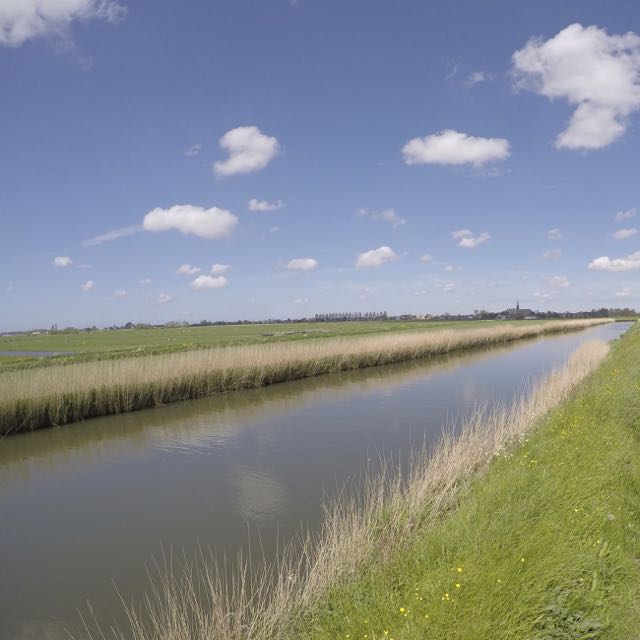
In the Netherlands, where over 70% of GDP comes from lands below sea level, they’ve built ground-breaking innovations to do more than deal with water, soil fertility loss and other externalized true costs of food – they’ve instead learned to embraced them with open arms. Now, with IP proven over millenniums, the rest of the world will be turning a keen eye to the Dutch for how to be successful and smart with utilizing what you’ve got.
In a country the size of Vermont that not only feeds it’s 17 Million inhabitants, and has become the 2nd largest global exporter of food – they’ve built a circular process of unique attention.
Meeting with the following experts involved in calculating the true cost of food, Externalized Cost is the fourth essay in the series:
essay 4: EXTERNALIZED COST
Chapter 1: CIRCULAR NOT LINEAR
THIJS CUIPERS; Director – LTO Netherlands
WIM DE VRIES; Professor integrated nitrogen effect modeling, Wageningen
Chapter 2: JUST COMMONSENSE
MARJAN VAN RIEL; Rabobank Business Manager Food & Agri
THOMAS URSEM; CSR Manager, Rabobank International
Chapter 3: LITTER IS CONTAGIOUS
GIJS KUNEMAN; Director & Founder Center for Ag and the Environment (CLM)
Chapter 4: WATER CONSCIOUS
HENK OVINK; Special Water envoy to the US
Chapter 5: FOOD IGNORANCE
JAN WILLEM VAN DER SCHANS; Short innovative food supply chains, Agricultural Economics research Institute at Wageningen
.
Diversify thy assets evolving our risk profile
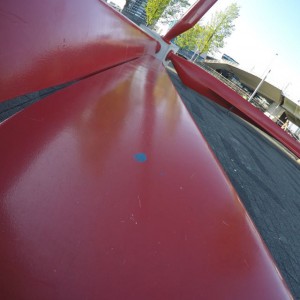 Instead of pointing the finger to present concerns with the integrity of food value, or extending blame for the loss of ecological systems being stressed by growing density of linear practice, my focus instead shall be evaluating how the opportunities for circular/sustainable agriculture are undeniable, and essential for future agricultural growth in all areas of the world. Detailing proven methodologies and a fiscally savvy approach that better aligns with changing consumer demand as mitigation to the festering tumors of diverse risks Stateside – the key seems to not ostracize the establishment of modern agriculture, but to embrace and form consortiums of mutually beneficial results. As the Dutch have shown, investing in supported innovation is proper risk mitigation.
Instead of pointing the finger to present concerns with the integrity of food value, or extending blame for the loss of ecological systems being stressed by growing density of linear practice, my focus instead shall be evaluating how the opportunities for circular/sustainable agriculture are undeniable, and essential for future agricultural growth in all areas of the world. Detailing proven methodologies and a fiscally savvy approach that better aligns with changing consumer demand as mitigation to the festering tumors of diverse risks Stateside – the key seems to not ostracize the establishment of modern agriculture, but to embrace and form consortiums of mutually beneficial results. As the Dutch have shown, investing in supported innovation is proper risk mitigation.
Witnessing proof in the Netherlands that this is possible, we have more than just an idealistic belief – we now have evidence, experience and a process that evolves us in a direction of production agriculture and food system diversification regionalized throughout the United States.
Meeting with the following contacts demonstrated circular agricultural affords Risk Mitigation – the fifth essay in the series:
essay 5: RISK MITIGATION
Chapter 1: PRECAUTIONARY PRINCIPLES
JAMES HIGGISTON; Minister-Counsellor for Agricultural Affairs, U.S. Mission to the EU
Chapter 2: BUILDING THE BRIDGE
JAAP PETRAEUS; Manager Corporate Environmental affairs & Sustainability at Friesland Campina
JAN-W. STRAATSMA; Manager Sustainable Dairy – Royal Friesland Campina
ADAM ANDERS; Managing Partner – founder – Anterra Capital
Chapter 3: BIOMIMICRY
PAUL KOPPERT; CEO and owner at Koppert Biological
DR. PIET VAN DER AAR; Managing Director – Schothorst feed research
Chapter 4: HEALTHY FOOD ANIMALS
KOERT VERKERK; Policy Advisor International Affairs – Dutch Organisation for Agriculture and Horticulture in Brussels
POLLY RUHLAND; CEO US Beef Cattlemen’s & Eisenhower Fellow’13
Chapter 5: INNOVATION
JORRIT JONKERS; Co-owner and operator of Oirschot Organics – an in soil glass-house production nursery
.

